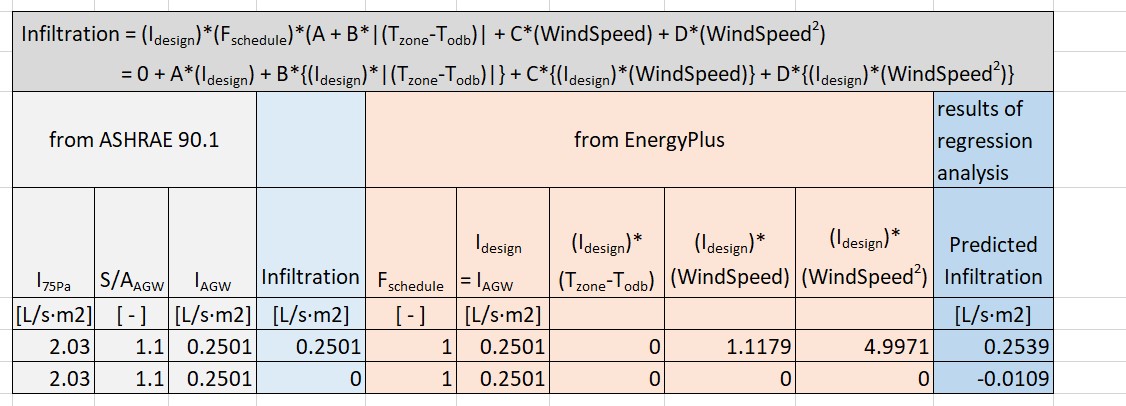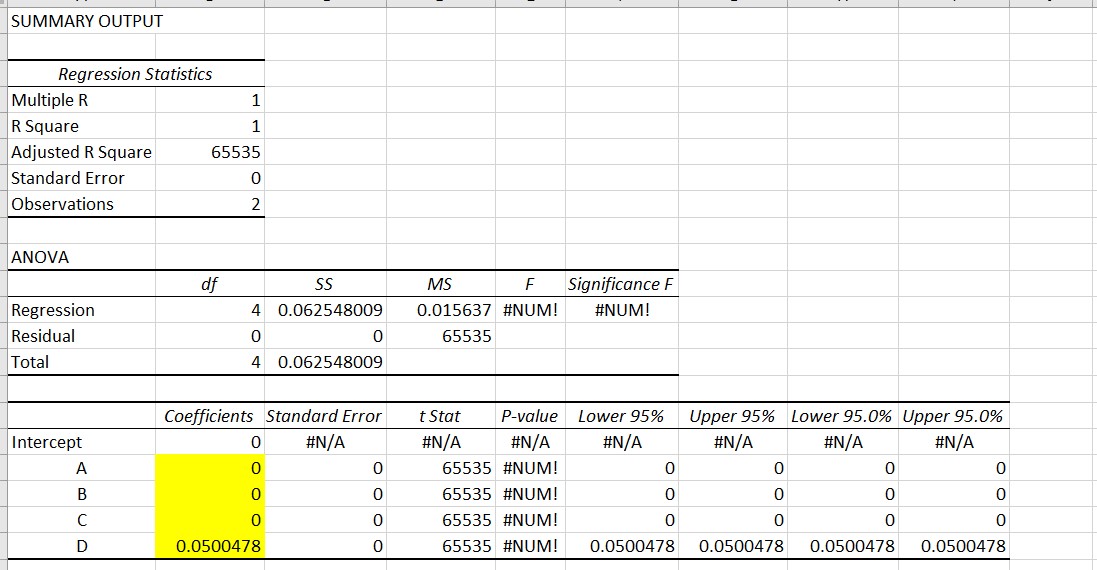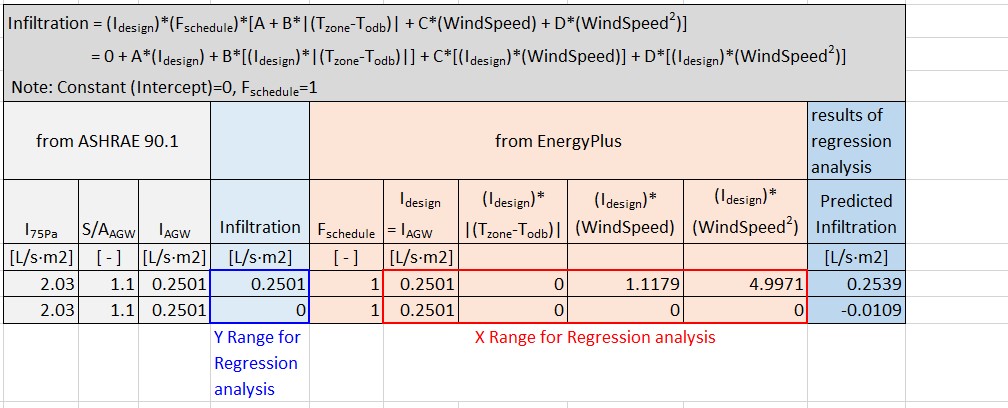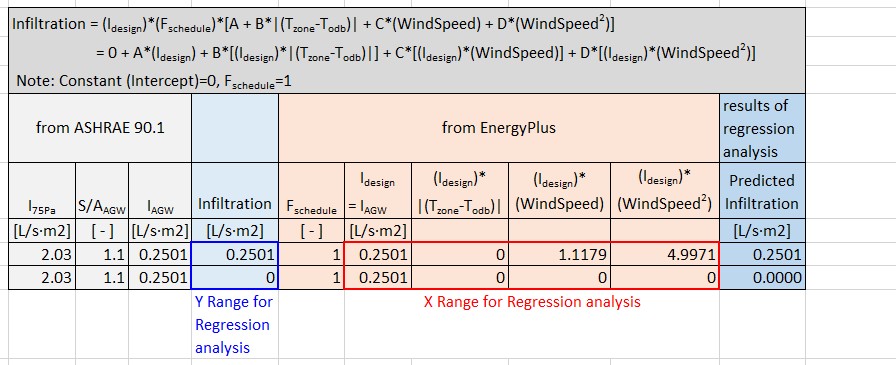I saw this very useful post and also read "Infiltration Modeling Guidelines for Commercial Building Energy Analysis", but I'm still not sure how everyone models Infiltration in accordance with ASHRAE 90.1 Appendix G.
I will introduce my approach below, so could you please give me your opinion on whether it is appropriate or not?
Beginning with the 2013 edition, ASHRAE 90.1 Appendix G specifies Infiltration (Air leakage) by the following formula:
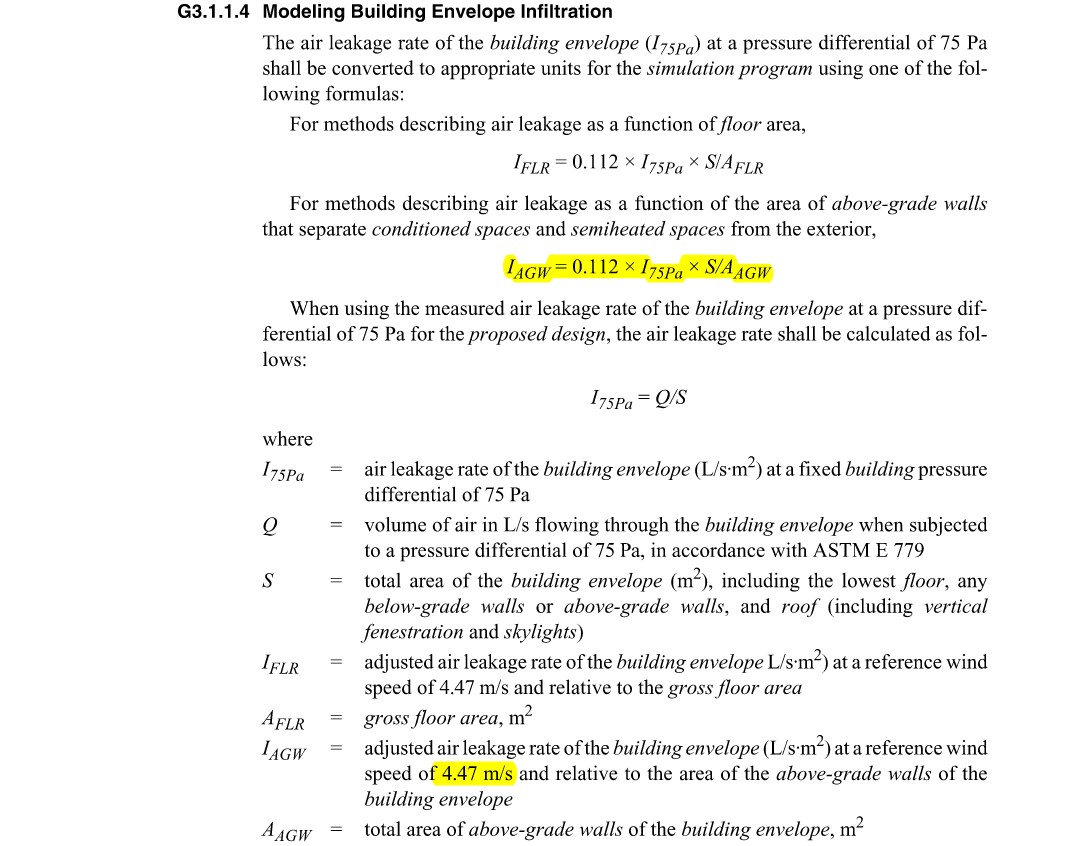
S and AAGW are different for each project, and I75Pa varies slightly depending on the edition of 90.1 (In the 2013 and 2016 edition, it's 2.03 L/s·m2 for both baseline and proposed cases. In the 2019 edition, it's 5.1L/s·m2 for baseline case and 3.0L/s·m2 for proposed case). But anyway, IAGW is the adjucted infiltration at a reference wind speed of 4.47m/s, and the actual outdoor wind speed cannot always be 4.47 m/s, so I think we need further adjustments to model Infiltration in EnergyPlus.
In EnergyPlus, ZoneInfiltration:DesignFlowRate uses the following equation.

Idesign can be IAGW. The four coefficients A, B, C and D needs to be input. I obtained them by regression analysis in Excel.
- For the WindSpeed, two cases were used for the regression analysis. One is at 4.47m/s and the Infiltration is equal to IAGW. The other is at 0m/s, in which case the Infiltration is assumed to be 0L/s·m2.
- For the Temperature difference between outdside and zones, I found "Table 802.1 Temperature Correction Factors for Pressurization and Depressurization Testing- Calculated according to ASTM E779-10" and I tried to utilise it at first, but as a result the regression analysis by Excel did not approximate Infiltration well. This is probably because the temperature difference term |Tzone - Todb| in the equation of Infiltration used in EnergyPlus is absolute value. I had to ignore the temperature difference term, i.e., B = 0.
I did regression analysis with just two data sets and got the following result.

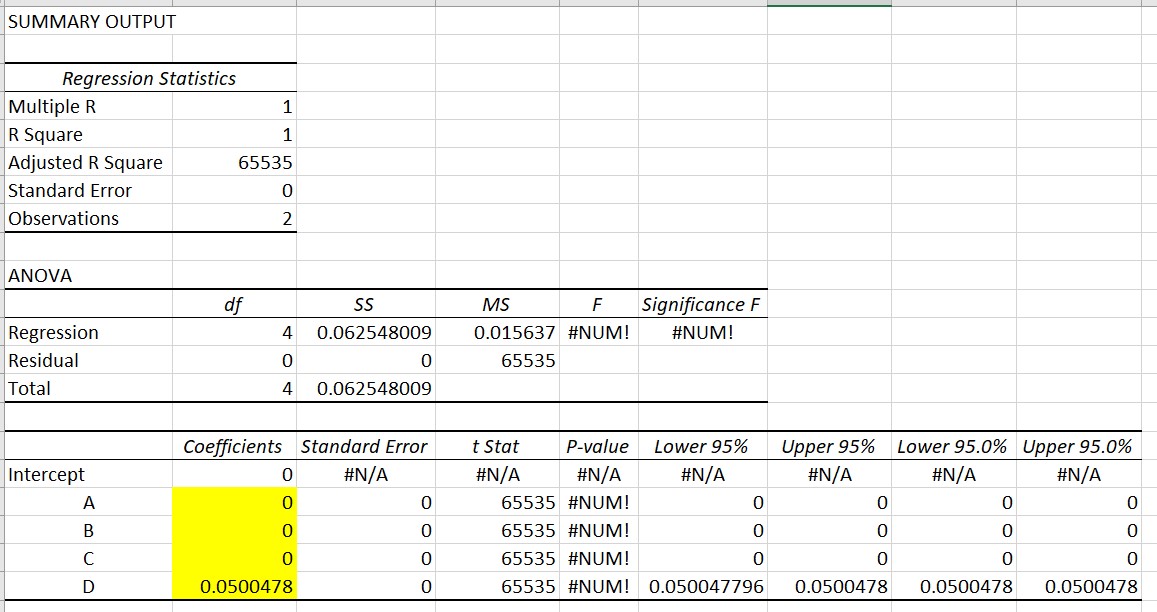
A, B and C = 0, and the infiltration is proportional only to the square of the wind speed. Although this is different from any EnergyPlus, BLAST, or DOE-2 default setting, it seems to make some sense to me because dynamic pressure is proportional to the square of wind speed (P = 1/2* ρV^2). But I may be making some big mistakes or oversights. Any suggestions or advice on my procedure or results would be appreciated. I put my excel file here just in case.


